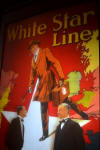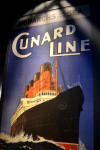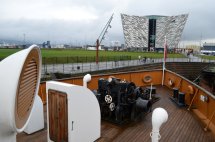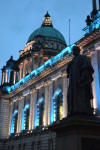Round The World and other travels
A frequent flyer's collection of trip diaries
January 2016: Belfast
Belfast is the capital and largest city of Northern Ireland, one of two entities formed in 1921 with the partition of Ireland into north and south. While Southern Ireland quickly evolved into the independent state now known as the Republic of Ireland, Northern Ireland still exists and remains a constituent part of the United Kingdom, alongside the countries of England, Scotland and Wales. As part of the Good Friday Agreement of 1998, the UK and RoI governments agreed that Northern Ireland will remain part of the United Kingdom unless a majority of its people, and a majority of people in the republic, both wish otherwise.
Belfast itself is a medium-sized city with around 270,000 people living within the official city boundary, and closer to 500,000 in the wider urban area. Throughout the 1970s and 80s and right up to the Good Friday Agreement of 1998, Belfast was off the tourist radar. This was the period of the so-called 'Troubles', when ongoing tensions between the loyalist and nationalist communities frequently spilled over into lawlessness, violence and terrorism. Since the 1998 settlement, the city has undergone much regeneration and is now seen as an increasingly desirable and interesting destination.
When Bruce suggested checking it out in January 2016, my only hesitations were over the proposed timing and the likely weather. It was absolutely no surprise to us when the prevailing conditions turned out to be cold, grey and wet. But in spite of that, we ended up having a thoroughly enjoyable short city break.
City Hall and Donegall Square
The impressive bulk of Belfast City Hall occupies a north-facing position in the middle of Donegall Square. Built in Baroque Revival style between 1898 and 1906, it is the home of the city council. The attractive grounds contain a garden of remembrance and cenotaph, a striking statue of Queen Victoria, and a memorial to those who lost their lives when RMS Titanic sank in 1912. The west side of the square is home to another imposing structure, the Scottish Provident building. This was once the main Northern Ireland office of Edinburgh-based Scottish Provident Institution, now part of Royal London.
 |
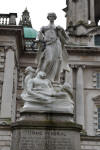 |
 |
 |
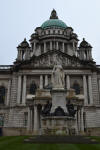 |
 |
 |
 |
 |
 |
Other city centre views
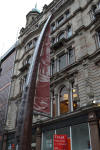 |
 |
 |
 |
 |
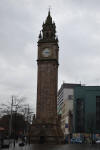 |
 |
 |
 |
 |
Titanic Quarter
Belfast's Titanic Quarter is an area of formerly derelict, reclaimed land adjacent to Belfast Lough, that was once used by shipbuilders Harland & Wolff. The area has undergone massive urban regeneration over the last fifteen years, the 'signature project' of which was the creation of Titanic Belfast. Opened in 2012, this outstanding visitor attraction gives the definitive account of the three sister ships Titanic, Olympic and Britannic. One of the galleries overlooks the very slipway where the ill-fated Titanic was launched. A short distance away is the SS Nomadic, the only surviving White Star Line ship, which acted as tender to the Titanic during her call at Cherbourg.










